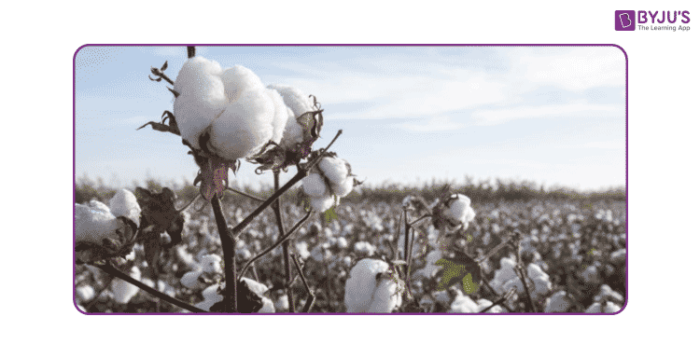Cotton – a seed hair fibre is commonly found in subtropical areas across the world. Fibre is a synthetic substance that is used in the manufacturing of several other materials, for instance, carbon fiber. When compared to natural fibres, synthetic fibres can be produced on a large scale, and they are cost-efficient. But in terms of comfort natural fibres have a greater advantage when compared to synthetic fibres.
Table of Contents
Cultivation
In India, cotton is mainly cultivated in the states of Maharashtra, Punjab, Rajasthan, Tamil Nadu and Madhya Pradesh. It is grown in black clayey soil with a warm climate. When its plant starts flowering, they give flowers of yellowish-white colour which turns red after a few days. Processes involved in its cultivation.

- Ginning: The plant from which cotton is picked contains seeds. The process of removing these seeds from cotton pods is known as ginning. Ginning can be done using hands or by machines.
- Spinning: The process of turning fibre into yarn is known as spinning.
- Weaving: The process of making a fabric by arranging two sets of yarn together.
- Knitting: Two yarns are used in knitting whereas in weaving more than two yarns can be used. This can be done by hand and also by machines. Example: Sweater is knitted from wool.
Uses of Cotton
- It is basically used for every type of clothing from jackets to normal shirts.
- At home, it finds its use in bedsheets and curtains.
- Its seed oil is used in food and cosmetics.
- It is also used in coffee filters.
- Its seeds are fed to cattle and crushed to make oil, rubber and plastics.
To know more about natural fibres like cotton, silk and jute, their cultivation and uses please subscribe BYJU’S on YouTube and to follow more about the same, download BYJU’S – the learning app.

Comments